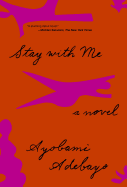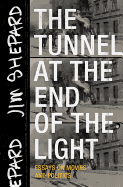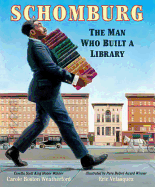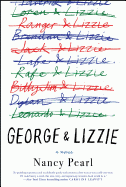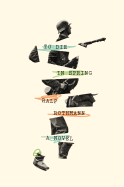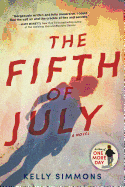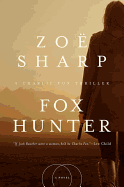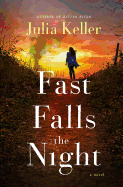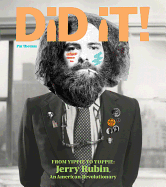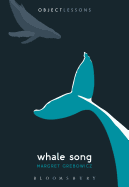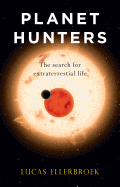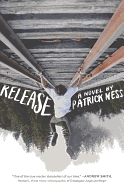Friday, September 22, 2017
"Happy families are all alike," Leo Tolstoy famously wrote in the opening line of Anna Karenina. "Every unhappy family is unhappy in its own way." While there's some truth to Tolstoy's comparison, it doesn't leave much room for nuance: most families fall somewhere on a complicated spectrum of joy, heartbreak and moments that contain both. Exactly where on that spectrum often depends on who's telling the story, and when. 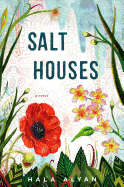 Hala Alyan's gorgeous novel Salt Houses (Houghton Mifflin Harcourt) begins with a wedding in Palestine, but its central characters, the Yacoub family, are soon uprooted by the Six-Day War of 1967. As matriarch Salma and her children and grandchildren navigate new lives in new countries, they grapple with the particular challenges of their cultural and historical moments, and the universal heartbreaks of family: identity, love, guilt and the secrets we keep.
Hala Alyan's gorgeous novel Salt Houses (Houghton Mifflin Harcourt) begins with a wedding in Palestine, but its central characters, the Yacoub family, are soon uprooted by the Six-Day War of 1967. As matriarch Salma and her children and grandchildren navigate new lives in new countries, they grapple with the particular challenges of their cultural and historical moments, and the universal heartbreaks of family: identity, love, guilt and the secrets we keep. 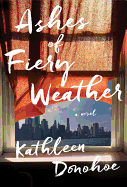 The O'Reilly women have long supported their firefighter husbands and brothers, and some of them eventually pursue the family trade themselves. Kathleen Donohoe's novel, Ashes of Fiery Weather (paperback, Mariner Books), follows seven O'Reilly women over a century of migration, marriage, difficult choices, and standing by the men they love (and each other) through literal and metaphorical fires.
The O'Reilly women have long supported their firefighter husbands and brothers, and some of them eventually pursue the family trade themselves. Kathleen Donohoe's novel, Ashes of Fiery Weather (paperback, Mariner Books), follows seven O'Reilly women over a century of migration, marriage, difficult choices, and standing by the men they love (and each other) through literal and metaphorical fires. 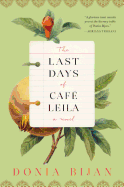 Noor Yadegar, the Iranian protagonist of Donia Bijan's novel The Last Days of Café Leila (Algonquin Books), is caught between countries and generations: her widowed father, Zod, is dying, and her daughter, Lily, is on the cusp of her American teenage years. When Noor and Lily return to Iran to care for Zod and work in the family restaurant, Noor begins to ask questions about her mother's death, and also about her own future and Lily's.
Noor Yadegar, the Iranian protagonist of Donia Bijan's novel The Last Days of Café Leila (Algonquin Books), is caught between countries and generations: her widowed father, Zod, is dying, and her daughter, Lily, is on the cusp of her American teenage years. When Noor and Lily return to Iran to care for Zod and work in the family restaurant, Noor begins to ask questions about her mother's death, and also about her own future and Lily's.
Though wildly different in setting and plots, all of these family sagas capture a more layered version of Tolstoy's truth: every family has its own rich, bittersweet story of love, loss, heartbreak and hope. --Katie Noah Gibson, blogger at Cakes, Tea and Dreams
Stay with Me
by Ayobami Adebayo
The first novel by Nigerian author Ayobami Adebayo, Stay with Me, follows the disintegration of a marriage in the face of abuse, infidelity and heartbreak. A telling indictment of the lies people agree to in order to survive, the book finds complexity in its characters as they attempt to destroy each other emotionally.
Taking place in Nigeria from the '80s until 2008, Stay with Me focuses on Akin and Yejide as they attempt to conceive a child. Told in alternating chapters from their points of view, the book relies heavily on concealed facts and plot twists. Akin, despite his proclaimed love for Yejide, is a controlling, abusive husband who constantly creates intense anguish and conflict for her, beginning by taking a second wife (a common custom in Nigeria at that time). Yejide is unable, or unwilling, to see Akin for what he is, and becomes manic, scrambling to get pregnant before this new woman does. Escalations upon escalations abound, until political and personal violence rip the marriage apart.
Readers might hope Stay with Me would be about Yejide's road to empowerment, but Adebayo has a much darker tale to tell. Akin's treatment of his wife is deplorable, but neither he nor Yejide seem to understand just how far his abuse goes. Stay with Me looks into the dark heart of a marriage, and shows how remaining committed sometimes means doing away with reality altogether. It's an impressive first book from an author who clearly has her sights on depicting human depravity. --Noah Cruickshank, adult engagement manager, the Field Museum, Chicago, Ill.
Discover: Stay with Me dives deep into an abusive marriage in Nigeria at the turn of the 21st century.
George and Lizzie
by Nancy Pearl
George and Lizzie--a clever, inventive and funny first novel by "America's librarian" Nancy Pearl--examines what it takes for young lovers finally to come into their own, deal with their pasts and places in the world and solidify their relationship.
In the 1990s, George and Lizzie meet by chance: Lizzie--drunk on vodka, stoned and heartbroken over losing a guy she loved--is taken to a bowling alley by her college roommate, who longs to heal her friend. In the adjacent lane of the Bowlarama is George, a dental student high on happiness while out to impress "the current woman of his dreams." The two pairs of strangers bowl side-by-side until Lizzie loses control of her ball, disrupting a potential strike for George and what could've been a stellar game. The mishap launches a narrative imaginatively woven together through short episodes about the pair--who they were before their fateful meeting, the history and influences that shaped their lives and how they eventually evolve individually and, later, as a married couple.
Lizzie and George have opposing views of the world. As a result, the opposites-attract nature of their decade-long romance--rife with complications and various references to literature and football--helps them to grow in unexpected, often over-the-top ways. With humor and heart, Pearl mines the absurdities of life to great effect, while also unraveling a much deeper, moving love story that touches upon thought-provoking aspects of family, happiness and truth. --Kathleen Gerard, blogger at Reading Between the Lines.
Discover: A comic love story about how contrasting experiences of youth can shape lives and seep into the nooks and crannies of adulthood.
To Die in Spring
by Ralf Rothmann
Much has been written about the atrocities of World War II from the Allied perspective, but rare are the accounts of those suffered by the Germans themselves. German author and poet Ralf Rothmann's fourth book in English depicts the haunting experiences of a conflicted German soldier as he grapples with life-altering decisions at the end of World War II.
As Walter Urban is dying of cancer, his son reflects on their difficult relationship. The son offers a blank notebook in which to record memories, but Walter dies before writing anything, leaving his son to piece together the events of his life during the war. As a 17-year-old milkman, Walter and his best friend Friedrich (Fiete) Caroli are drafted into a depleted German army. After basic training, Walter serves as a supply driver while Fiete is sent to the front against the approaching Red Army. Walter's post allows him to observe the brutality of war from the periphery. This changes when he witnesses the murder of innocent villagers by German officers and the inevitable life-altering choices he faces upon Fiete's desertion.
Rothmann (Young Light) does a wonderful job contrasting the challenges to Walter's integrity with the treachery of the more experienced officers. The scenes are harrowing--villagers bursting into flames after a phosphorous attack by enemy forces, bodies of deserters dangling in tree limbs--and Rothmann leaves no details unturned. He describes the anguish of the German people in the waning days of war and its enduring legacy on future generations: "If you're mentally or physically injured it does something to the next generation. The insults, the blows or the bullets that hit you also injure your unborn child."
To Die in Spring is an important addition to the formidable canon of World War II literature. --Nancy Powell, freelance writer and technical consultant
Discover: The last days of World War II are observed through the eyes of a German man coerced into service as an SS soldier.
The Fifth of July
by Kelly Simmons
Every July 5, the Warner family gathers on Nantucket for a group photograph. It's tradition, as much a part of summer as clambakes and chowder with longtime friends. But for Caroline Warner, the obligatory photo session and the successive years of family portraits in their vacation home spark painful reminders of being raped at age 13 on the Fourth of July.
Three decades later, the Warners still don't discuss what happened during that fateful backyard slumber party in 1987, leaving unresolved feelings on many levels. With a new assailant at large, Caroline's protectiveness of her young daughter is heightened by the realization that life on Nantucket has changed, both inside and outside their home. Chemotherapy has profoundly altered patriarch Tripp Warner's neurological functioning. A new neighbor's lawsuit prompts a backlash of hate crimes. Siblings Caroline and Tom struggle with their quiet contempt for each other amid old and unspoken hurts. Newcomers demolish and lavishly rebuild without regard for island norms and customs while the Warners' home--noted for its grand widow's walk with impressive island views--remains stagnant, stuck in a bygone time. ("Nothing in the house was new. Only things with heart, memory, stories woven in.")
Kelly Simmons (The Bird House) invites readers into the Warners' home and lives through their own words; The Fifth of July is narrated by several unreliable characters, each demonstrating the need to declare independence from the painful experiences, places and dysfunctional people in their lives. Simmons brilliantly draws readers into the family's pervasive cloud of suspicion and distrust, contrasting the picturesque idyllic innocence of Nantucket summers with the storms of adulthood. --Melissa Firman, writer, editor and blogger at melissafirman.com.
Discover: A dysfunctional family gathers for their annual Nantucket vacation amid change and unresolved issues.
Mystery & Thriller
Fox Hunter
by Zoë Sharp
Zoë Sharp delivers one knockout action scene after another in her rough-and-tumble geopolitical thriller Fox Hunter. Part of the Charlie Fox series, the novel is set in the Middle East, in Iraq and Jordan, and parts of Europe. After an ex-colleague turns up dead, tortured and mutilated, Charlie, an ex-special forces soldier who works for a private security firm in New York, is sent to Iraq to investigate. Navigating the shady machinations of private military contractors in the war-torn country, Charlie struggles to find people to trust as she pieces together the clues. The murder leads her to a tragic incident in her past, when she was raped and forced out of the military, and she wonders if her former lover Sean Meyer, seen leaving the scene of the murder, is exacting revenge on her behalf.
Sharp writes with a muscular, punchy style that matches the novel's hardboiled plot. She has a canny way of describing her characters under extreme pressure: one character "scrubbed his palms up and down his face as if to clear the grit of weariness." In another instance, Charlie describes how "the acid in my stomach leached out in my voice." Sharp's action scenes--there are many--are deftly rendered and punchy. Discovering a string of brutal rapes in Iraq (with similarities to her own), Charlie comes face-to-face with the cruel realities of patriarchy in certain parts of the world--most horrifically exemplified when a victim is mutilated by her own father for bringing shame upon her family.
Dogged in its sense of justice and fierce in its themes of female empowerment, Fox Hunter is an intense thriller. --Scott Neuffer, writer, poet, editor of trampset
Discover: In this action-packed geopolitical thriller, a special agent investigating a murder in Iraq is forced to confront the men who raped her.
Fast Falls the Night
by Julia Keller
Julia Keller's sixth novel featuring Raythune County prosecutor Bell Elkins is disturbingly familiar. Taking place over 24 hours, Fast Falls the Night narrates an especially brutal chapter of the heroin epidemic in Acker's Gap, W.Va.
When Sheriff's Deputy Jake Oakes responds to a call for a possible overdose, the scene isn't a new one. Drugs are running rampant in the small Appalachian town. Knowing the woman's chances of survival are bleak, Jake does his job, turns the situation over to the paramedics and moves on. What he isn't prepared for is the rash of overdoses and deaths that follow this first, sadly common tragedy.
The sheriff's department and emergency squads are strained by the unceasing reports of overdoses, and Bell Elkins must decide how much of the town's thin resources can be funneled into a search for the dealer and the deadly heroin. Throughout the day, her phone continues to chime with new messages of more overdoses, and she knows they must do something.
Keller (A Killing in the Hills) presents the opioid crisis with compassion and empathy. A doctor emotionally declares, "The victims of nine-eleven were professionals. Bankers and attorneys and executives. People who mattered. But these--these addicts--did this to themselves." Through the plot's events, Keller counters his attitude, revealing it to be shortsighted, selfish and unforgivable. Fast Falls the Night is undoubtedly dark and gritty, but it's also so beautifully and humanely written that a glimmer of hope is sure to light in every reader. --Jen Forbus, freelancer
Discover: As heroin makes the rounds in Acker's Gap and the overdose death toll rises, Bell Elkins races to find the source and halt the devastation.
Biography & Memoir
Did It! From Yippie to Yuppie: Jerry Rubin, an American Revolutionary
by Pat Thomas
Is the world ready for an oversized, illustrated history of famous 1960s political firebrand Jerry Rubin? San Francisco music producer and journalist Pat Thomas (Listen, Whitey) thinks so. Did It! From Yippie to Yuppie is a collage of the political and cultural ambience and artifacts of the '60s. If Rubin, who died in 1994, is best known for his affiliation with radical Abbie Hoffman, Thomas makes it clear that Rubin was the more refined of the pair. Hoffman and Rubin were the Cheech and Chong of the politically active, protest-marching side of the decade's youth movement. They formed the Youth International Party, targeting what Rubin called "the Marxist acidhead, the psychedelic Bolshevik." The Yippies made their name with the 1968 Festival of Life gathering during the Democratic Party convention in Chicago. With the violence that ensued and the arrest of Rubin, Hoffman and their fellow "Chicago Eight," American political history took a decisive turn.
Thomas scatters his text with hundreds of archival photos, journals, manifestos and broadsides from the era. He also includes quotations from participants in the political furor of the times and musicians like Dylan, Lennon and Ochs who created its soundtrack. He includes excerpts from books by the likes of Norman Mailer and Eldridge Cleaver, as well as Hoffman's Steal This Book and Rubin's own Do It! From Rubin's roots in a family of Jewish merchants and truck drivers in Cincinnati to his later years as a stockbroker and New Age spokesman, Thomas tells the complicated history of a man who made a revolution and then struggled to find his place in its aftermath. Did It! is not just the Jerry Rubin story--it's an epochal picture of an entire generation. --Bruce Jacobs, founding partner, Watermark Books & Cafe, Wichita, Kan.
Discover: In Pat Thomas's biographical, illustrated history of Jerry Rubin, he captures the political turmoil that made the 1960s a generation-defining era.
Social Science
Whale Song
by Margret Grebowicz
"Perhaps no other animal sound on the planet has a comparably powerful effect on the contemporary environmental imagination," writes Margret Grebowicz in Whale Song, her enchanting contribution to Bloomsbury's Object Lessons series. Grebowicz, an associate professor of philosophy at Goucher College, investigates what whale song has meant to humans since it was first recorded in the 1950s.
These "songs," which are really whales' means of communicating with each other, so moved human listeners, writes Grebowicz, that they helped launch the modern-day environmental movement, as well as a proliferation of international anti-whaling laws. But today, she continues, the songs' meaning extends far beyond the "politics of killing whales."
One of her most interesting insights is that whales and dolphins seem to be equally interested in learning about us. Their fascination, however, will diminish in concert with our growing dependence on smart phones and social media: "it's reasonable to assume that intelligent creatures would not wish to talk to creatures that talk to each other without saying anything."
But instead of despairing, Grebowicz posits that whales inspire us to do better. Weaving throughout Whale Song is the notion that their strong bonds with each other--whales' familial ties are among the strongest among mammals--remind us of the importance of face-to-face communication. Beautifully written and often deeply moving, Whale Song is more than a fascinating examination of ocean life--it's a balm for the soul. --Amy Brady, freelance writer and editor
Discover: This slim but enthralling work of nonfiction explores what whale song has meant to humans since our first recording of it.
Essays & Criticism
The Tunnel at the End of the Light: Essays on Movies and Politics
by Jim Shepard
Most readers familiar with the work of Jim Shepard know him through inimitable short story collections like 2017's The World to Come. But Shepard has another life, at Williams College, where he teaches the course "Hollywood Film" for the English department. In The Tunnel at the End of the Light, a collection of essays published in the Believer magazine during the second term of George W. Bush, Shepard displays a talent for sharp film criticism laced with equally penetrating political insight.
Shepard is fond of placing a pair of films in opposition to one another to make his critical points. He does that, for example, in an essay that matches two Academy Award-winning movies--Schindler's List and The Pianist--to explore the way Americans "seem to cherish the notion about our country that we're slow to get stirred up, but decisive once resolved to act," an observation that allows an extended reflection on the subject of heroism. That's a topic that obviously engages his critical interest, as he moves on to consider how the films of The Godfather trilogy "lure us in with their protagonists' heroic qualities."
Shepard maintains a consistent focus on these films in their social and cultural context. Whether he's denouncing the "perverse omnivorousness of capitalism" revealed in Chinatown, or the "clutch of carrion-eaters in charge of our political and corporate landscape who appear positively ebullient in their rapacity" exposed in Goodfellas, Shepard is as decisive in his judgments about politics as he is about cinema. Amid the thumbs up or down style that dominates 21st-century American film criticism, Shepard's provocative engagement with this art form offers a bracing change of pace. --Harvey Freedenberg, attorney and freelance reviewer
Discover: Jim Shepard's essay collection blends astute film criticism with trenchant political insight.
Science
Planet Hunters: The Search for Extraterrestrial Life
by Lucas Ellerbroek, transl. by Andy Brown
In the vastness of the universe, there must be other planets with life forms on them, a belief held by many in the scientific community and beyond. Planet Hunters by Dutch astronomer Lucas Ellerbroek introduces readers to the men and women who are on the hunt for viable exoplanets, those in the "Goldilocks zone," where the conditions are right for some form of life to exist, even on a microscopic scale. Ellerbroek examines how the first astronomers gazed at the stars--with the naked eye and then with early telescopes--and shares their thoughts and discoveries. As he does, he provides great examples to help readers understand the immense distances in space and the difficulties inherent in studying the "wobbles" of stars and planets so many millions of miles away.
Ellerbroek explains that the hunt for other livable planets was once an acceptable practice before it fell out of favor among scientists. It has since found favor as an exciting field again, now that thousands of potential life spots have been discovered. With the advent of better technology, new methods of measuring planets have emerged. Spectroscopy, for instance, breaks down light emitted from a star into a barcode of varying wavelengths based on chemical composition. Meticulous and well-researched, but not dull, Planet Hunters is infused with the enthusiasm of the many people who have devoted their lives to searching for a potential neighbor in the enormity of space. --Lee E. Cart, freelance writer and book reviewer
Discover: A Dutch astronomer guides readers through the search for life elsewhere in the universe.
Children's & Young Adult
Schomburg: The Man Who Built a Library
by Carole Boston Weatherford, illus. by Eric Velasquez
With great respect to the man's riveting life story, Caldecott and Coretta Scott King Honors author Carole Boston Weatherford (Freedom in Congo Square) relates through narrative poetry the story of Afro-Puerto Rican immigrant Arturo Schomburg. While each poem in Schomburg: The Man Who Built a Library can stand alone as a single snapshot in the literary life of Schomburg, Weatherford's portrayal of the bibliophilic law clerk is so wondrous, readers won't be able to resist turning the pages to learn more.
In addition to shedding light on a man who voraciously collected books, letters, art and music created by people of African descent, Weatherford illuminates significant individuals whose art makes up the precious history Schomburg preserved and ultimately curated. She treats readers to fascinating glimpses of poet Phillis Wheatley, abolitionist Frederick Douglass, revolutionary Toussaint Louverture and composer Ludwig van Beethoven. And Schomburg did not stop at collecting. Despite having never attended college, his lectures, research and writing influenced the Harlem Renaissance and ensured that Africans' voice in history would not be silenced, "Arturo's articles, essays, and letters to the editor/ shared what he had learned--facts kept in darkness far too long..../ Schomburg's words give voice to the ancestors./ Their pigment flowed through his pen."
Complementing the lyrical language of Weatherford's words are the richly textured, bold paintings of another successful Afro-Puerto Rican man from Harlem, Pura Belpré Award-winning illustrator Eric Velasquez (Ol' Clip-Clop). The detail and majesty of Velasquez's art conveys wonderful layers of meaning likely to spark imagination and thoughtful reflection.
Picking up Schomburg's torch almost a century later, Weatherford and Velasquez are continuing to ensure that African history isn't lost: Schomburg started the collection that is now the Schomburg Center for Research in Black Culture, part of the New York Public Library, and his pigment flows through others' pens as he becomes a significant part of his own narrative. --Jen Forbus, freelancer
Discover: Two African-American scholars have written a poetic biography of Arturo Schomburg, the immigrant who created a library in Harlem to prevent the disappearance of African voices from history.
Release
by Patrick Ness
Adam Thorn's father is the head preacher of Frome, Washington's "second-largest evangelical church." "Blanched blond, tall, bulky in a way that might be handsome but is only just starting to properly agree with gravity," Adam takes after his father in both looks and charisma. But it is his older brother, Marty, who is following their father's steps into ministry. Adam, gay and out at school but closeted in his ultra-religious, ultra-conservative home, just wants to get "the hell out of Frome." His day today will be long--pick up flowers for his mother, work, see his boyfriend, attend a good-bye party for his first love--but there is no preparing for what will be revealed to him before the sun sets.
Katherine van Leuwen was a senior, one year above Adam. Last week, she was murdered; her boyfriend attacked her while "amped up" on meth. Katherine is most certainly dead. But when Adam makes his first stop of the day and pricks himself on a rose thorn, "she wakes, suddenly, to the smell of blood, of roses."
As Adam deals with his own confusing emotions about his ex and his current partner and attempts to hold himself up under the weight of family secrets, the spirit who was Katherine roams around the town, accompanied by a powerful faun, seeking... something. Vengeance? Understanding? Patrick Ness's (The Crane Wife, The Rest of Us Just Live Here) split narrative gives fans of both realism and fantasy entry into Release. Both stories move swiftly, pulling the reader through very different sides of the same town; neither Adam's nor Katherine's story needs the other but each highlights and reflects the sorrows and beauties of the other. An exploration of what it is to love and lose, heal and love again. --Siân Gaetano, children's and YA editor, Shelf Awareness
Discover: These are two stories of two souls--one alive, one dead--who seek to understand and heal.
Dazzle Ships: World War I and the Art of Confusion
by Chris Barton, illus. by Victo Ngai
"One of the ships on this page is painted in sneaky, stripy camouflage. You probably can't even see it. Oh. You can see it? Hmmmmmmm."
The striped ship, depicted in bright blues and yellows, is a World War I Allied vessel. In 1917, the Central Powers began attacking Allied non-fighting ships to cut off Britain and win the war by starving the island nation. Desperate to feed its people, Britain tried "different things to stop the submarine attacks"; Royal Naval Volunteer Reserve lieutenant-commander Norman Wilkinson was the most well-known of those who floated the idea to camouflage ships. He said, "since it was impossible to paint a ship so that she could not be seen by a submarine, the extreme opposite was the answer--to paint her... in such a way as to break up her form and thus confuse a submarine officer as to the course on which she was heading."
And so the "dazzle ship" was born: more than 3,000 U.S. and British ships were painted with the crazy-looking patterns. As developed for children by author Chris Barton (Whoosh!), this story shows that "sometimes desperate times call for dazzling measures"; ingenuity is important, especially in the most trying of times. Paired with Barton's welcoming language and accessible story, Victo Ngai's illustrations sparkle. Using mixed analogue and digital media, she re-creates historical map templates and incorporates her own dazzle, creating overlapping and interconnecting patterns with strong lines and bright colors; each double-page spread is an abundance of color and texture and shape. Dazzle Ships shines and shows that "a willingness to tackle problems by trying the unlikely, the improbable, the seemingly bonkers will always be needed." --Siân Gaetano, children's and YA editor, Shelf Awareness
Discover: Chris Barton and Victo Ngai's Dazzle Ships gives young readers an introduction to World War I in a clever and colorful way.


